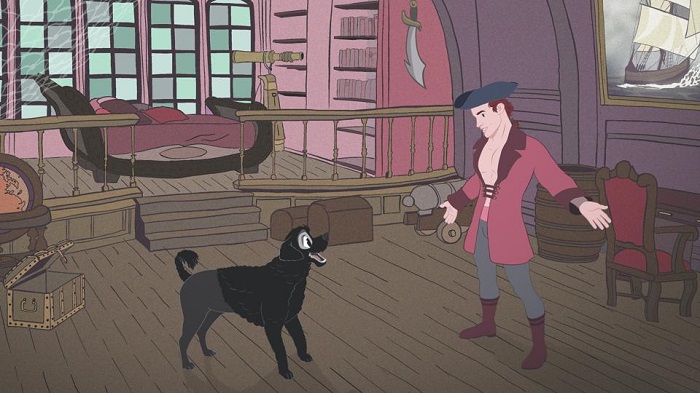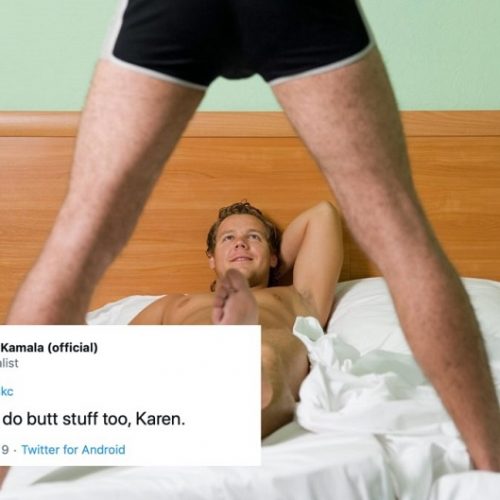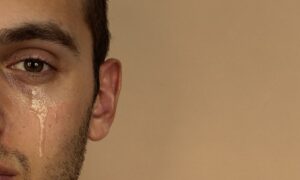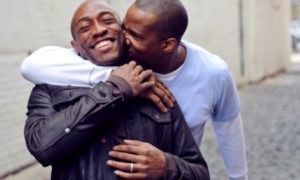About The Gay Fairytale That Has Been Lost For 200 Years
Originally published on Forbes
It’s long been presumed by many folklorists that heroic LGBTQ characters didn’t exist–because when they were told from generation to generation, being queer was a taboo.
But one newly released gay fairytale that can be traced back to at least the 19th century has been discovered by Pete Jordi Wood, the Cornish writer and illustrator.
His research suggests that not only did gay fairytale “The Dog And The Sailor” exist but that a “whole chunk of LGBTQ folklore” was “deleted” by one homophobic man, as recently as the 1950s.
“We know that queer characters and stories were prevalent in mythology,” Pete reportedly said. “There is some fascinating stuff about the origin of Mulan and how it’s actually a trans narrative. So why, particularly in European fairy tales, did queer characters suddenly, seemingly, disappear?”
The reason we don’t have much to point to is not that LGBTQ folklore didn’t exist, but because during a relatively short period of history–one of the most important folklore academics put his own morals into play when editing the most internationally renowned folklore collections.
“Before books, people told stories to one another, often around the fire. These stories would travel this way down generations and around the world,” Pete says.
One classic example is you can track early variants of Cinderella to China during the Tang Dynasty (618-907 CE.)
But this kind of storytelling came to an abrupt halt with the invention of the printing press. People stopped telling tales, in part because they became more literate and read books instead.

Pete Jordi Wood – The Dog And The Sailor is a release of the folklore story, The Dog And The Sea, as edited by Stith Thompson
Gay Fairytales Have Always Existed, But Some Have Been Edited Out Of History
It is challenging to trace stories further back than the 19th century because it wasn’t until the 1800’s that “Folklorists” became a fully-fledged academic discipline. Around the Industrial revolution, and the invention of the printing press, some of the earliest Folklorists began to create collections of folklores.
Capitalizing on listening to storytellers, they began writing down and publishing their stories as collections. This sparked a considerable push to catalogue stories, from about 1850-1900, before they were lost forever, as people began to read instead of pass stories from generation to generation.
And this is where Pete says the filtering of LGBTQ characters began to occur.
“Over one hundred years, very few people edited a catalogue of the world’s folklore with a system which logs different variations of tales across borders around the world,” Pete says.
They used the Aarne Thompson Uther Tale Type Index, to catalogue certain folktales by their structure and assign them AT (Arne Thompson) numbers.
Stith Thompson, an American Scholar and Folklorist, one half of the duo who created this system, got to work on cataloguing, which is where he monumentally erased much of LGBTQ folklore.
“Unfortunately by his own accounts, Stith Thompson brought with him to the editing his own sense of right and wrong. In the accompanying Motif Index of Folklore he compiled in the 1920s, and revised in the 1950s, he lists ‘Homosexuality’ and ‘Lesbianism’ in a section called “Unnatural Perversions” with bestiality and incest. Open about his views, he admits he omitted many stories in the catalogue because they were ‘perverse’ or ‘unnatural,’” Pete says.
“One dude. One guy got to choose what stories did or didn’t make the cut in what is now the core resource and system for documenting folklore in an order still used today.”

Much gay folklore was lost when Stith Thompson and other prolific folklore academics imposed their own morals and the stories they heard when they edited them for their collections
Did Stith Thompson Press “Delete” On Vast Chunks Of LGBTQ History?
In a matter of speaking, yes – but not entirely. His folklore collections remain rife with maligned evil LGBTQ characters who, rape, pillage and murder.
“Unfortunately, Stith Thompson was all too happy to put LGBTQ folk tales into his catalogues if the queers got bashed up, imprisoned, sent to hell or murdered. Or worse, that they were predatory and evil,” Peter says.
But there is light at the end of this historical tale – one story about a prince and a sailor who fall in love has survived.
Studying for a Masters degree in Illustration at Falmouth University, and sick and tired of the ‘Hero’s Journey’ Pete re-read Stith Thompson’s folk tale catalogues. And he found something Thompson had missed, something inherently queer.

The Dog And The Sailor is an ancient story, only reimagined with new illustrations, that truly depicted a positive queer story that was passed from generation to generation over 200 years ago
‘The Dog And The Sailor’ Is The Gay Fairytale Where The Male Sailor Gets To Kiss Prince Charming
Stith Thompson’s six-volume Motif-Index of Folk-Literature is considered the international key to traditional material.
“So I looked at over 600 tales in the archive, reading from a queer perspective. And finally, like any good fairytale, my wish to find my Prince Charming came true,” Pete says. “I found this weird-ass tale type called “The Dog and the Sea” which existed in multiple languages, but not in English.”
So after translating variations of the story from Danish, German, Frisian, and others; and checking Thompson’s synopsis was correct, containing the same elements or motifs – Pete found an “unbelievably and fabulously gay” plot.
“You’ve got this guy who wants to be a sailor who goes on this great adventure, wining the hand in marriage of a handsome prince. The witch in it is fabulous and ridiculously beautiful–a nice twist on the ugly old hag routine. The sailor’s mother is overprotective and funny. There’s a bunch of sexual innuendos. Plus the prince is a total dreamboat. Ultimately it’s an ancient tale with a positive portrayal, of a guy who can be read as gay or asexual, but certainly queer, who is the only person who can defeat the evil because he can resist her beauty.
“I mean hello, Disney, please make this movie!”
This hidden gem has been available in collections all across Europe, for over a hundred years, in print. But Pete got ‘gay goosebumps’ when he realised what he’d found.
“When I started to recount it to my gay friends, they got goosebumps too. I’m pretty sure goosebumps is an accurate measure of the fact a story is kind of special. We don’t know when The Dog and the Sailor was first told, but it would likely be far older than the 1800’s when it was first written down in words. What I draw from it is how much it resonates with today’s world. Not just the queer aspects, but a story about male mental health, austerity, and even climate change. If it was groundbreaking, then, whenever it first surfaced in history, in many ways, it still is.
And does Prince Charming get his kiss at the end?
It depends on whether you read Pete’s adult or child variation of this lost queer fairytale re-born. But both come as an ever more non-binary generation are hungry to know more about their long lost queer history.
“The Dog and the Sailor” is available now with an accompanying online, 3D interactive exhibition of the artwork, narrated by Years and Years actor Dino Fetscher.










3 Comments
Black Dynasty
August 27, 07:42Sighs, imagine reading these whilst growing up or a Disney movie of this existing as part of the norm.
Pink Panther
August 27, 09:09Aswear!!! The difference it would have made!
bamidele
August 27, 12:59Wow! But I am not surprised about this. The fact that one person could archive literary collect based on what he considered ‘natural’, ‘moral’, or not shows that everything about world cultural productions were (and are still being) constructed based on the opinion of some person(s). We will be more than shocked if we studied our world thousands of years back.
For example, I have found out in my research on Africa, that the concepts of ‘husband’ and ‘wife’ were fluid and did not rigidly denote ‘man’ and ‘woman’ as we assume today. Thus, a man could have fellow man or woman as wife, and woman could have fellow woman or man as wife. And there are oral, visual and material evidence about these concepts; albeit through close reading. These concepts clearly suggest knowledge production and human relations amongst precolonial africa. Therefore, I usually laugh when many ignorantly claim what was our culture, and what wasn’t.
We really need to continue unlearning and relearning about who we were and why we are how we are now.